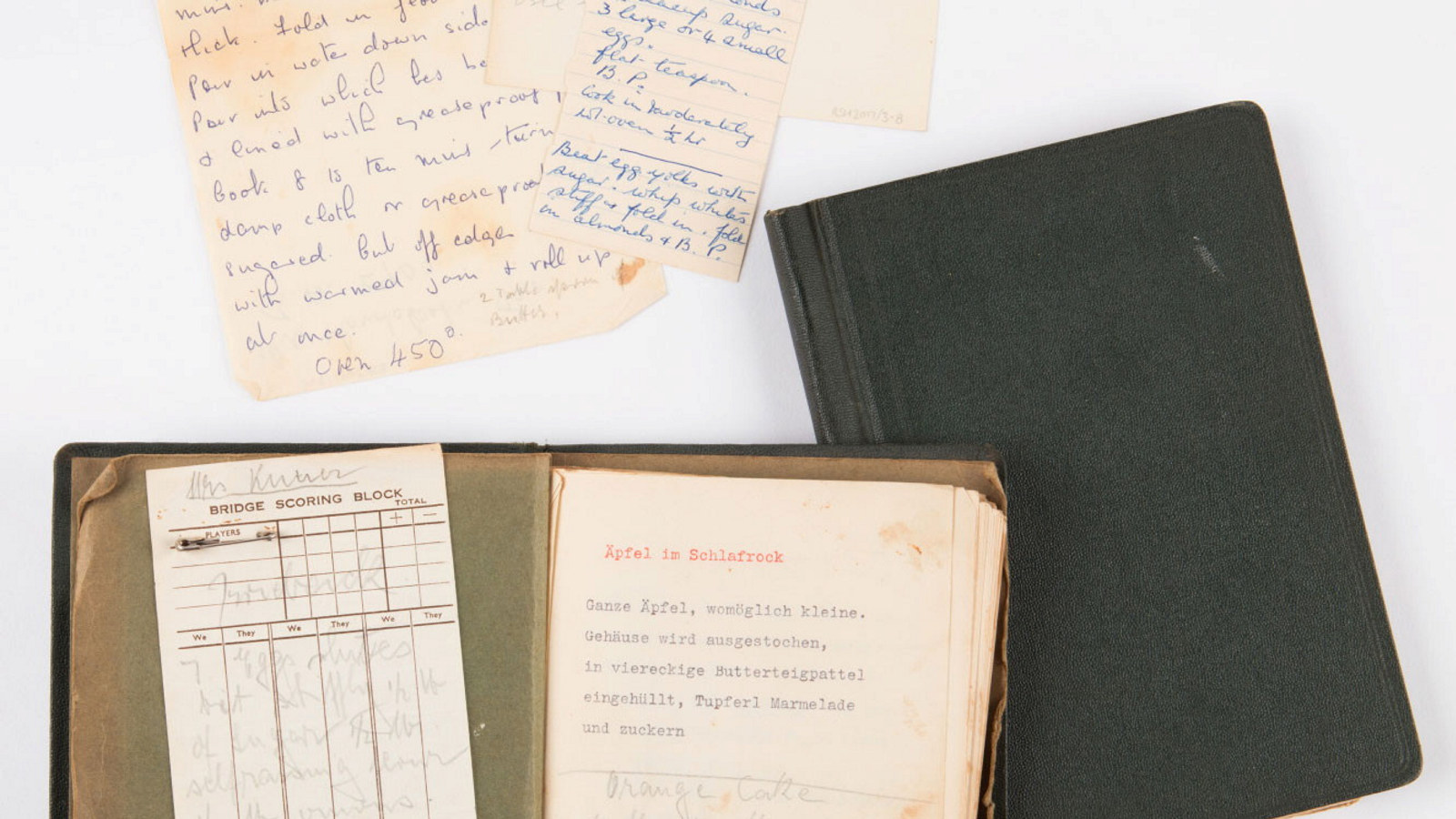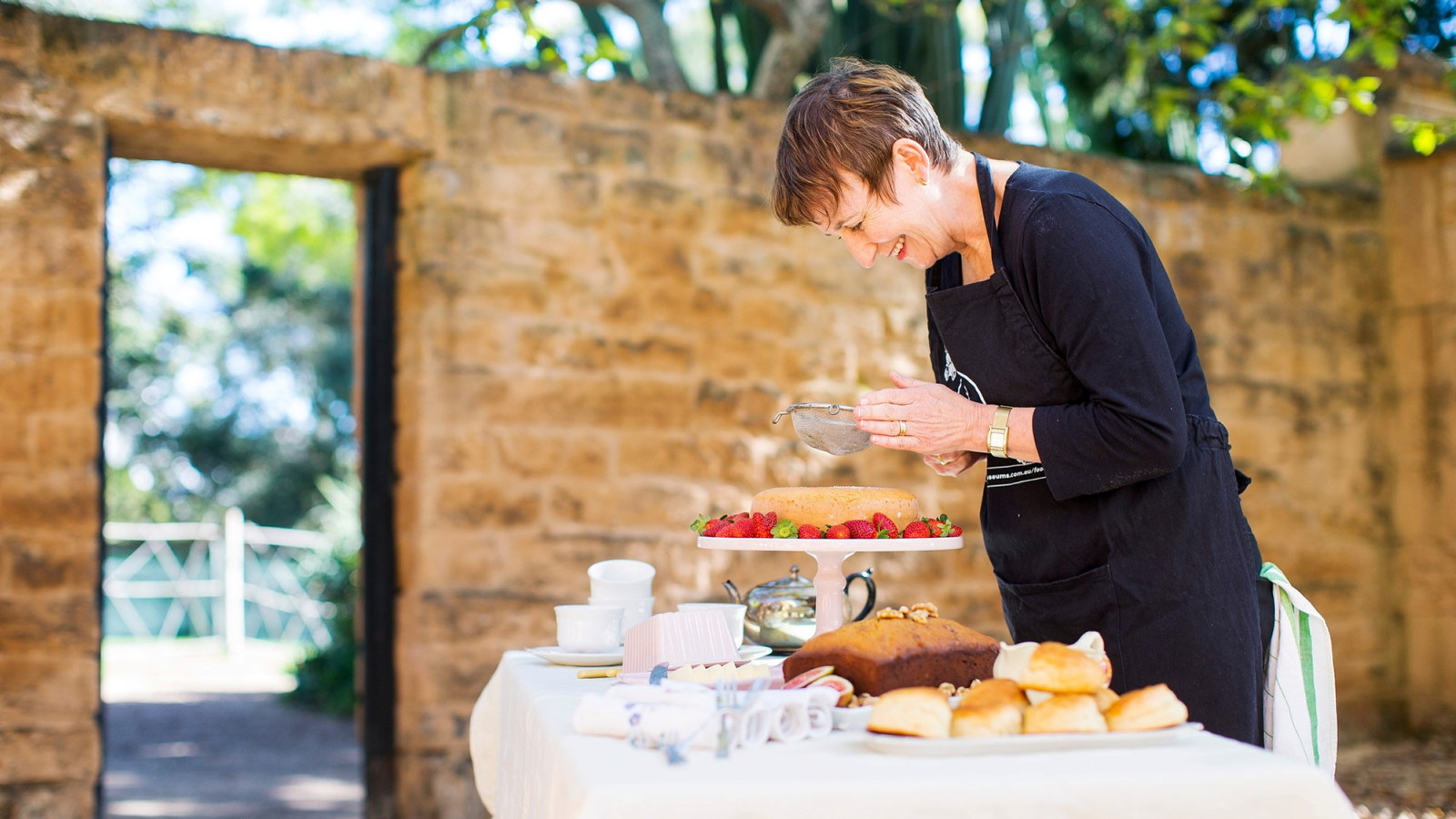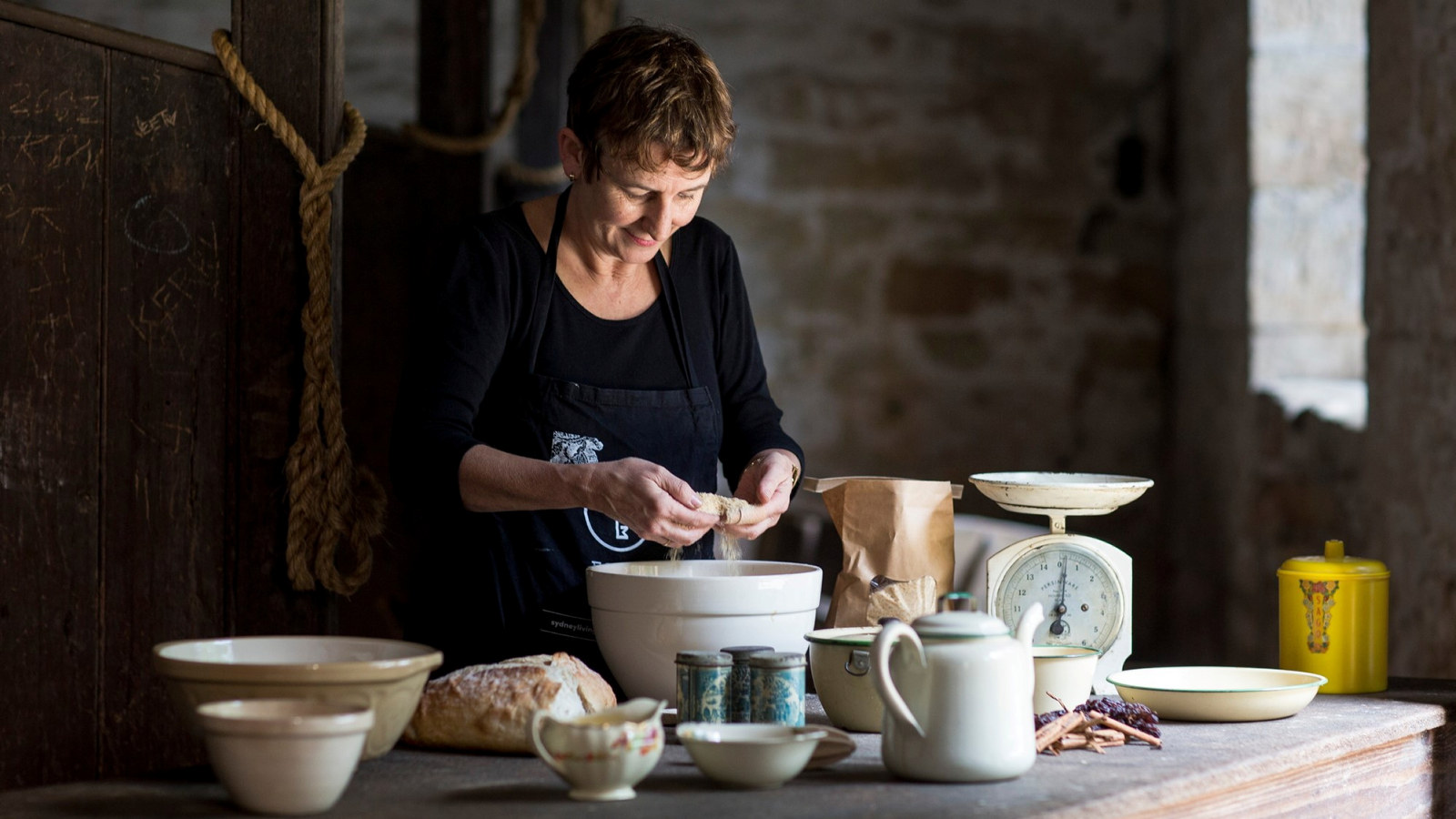Eier auf Florentiner Art (Eggs Florentine)
This classic recipe is simple to make yet rich and flavoursome. Perfect for a weekend brunch or a light supper.
This recipe is from Rose Seidler’s personal collection and is made up of two parts, Eggs Florentine and the accompanying sauce au gratin.
Below you’ll find our easy-to-follow instructions, along with the translation from the original German.
Ingredients
Eggs Florentine
200g English or baby spinach leaves, washed, steamed or blanched until wilted, and drained well
1–2 tablespoons butter
10–12 button mushrooms, sliced (optional)
Extra butter, for greasing
½ cup fresh breadcrumbs, made from stale white bread
4 eggs (or 8 for a heartier serve)
Sauce au gratin (see below)
4 tablespoons grated parmesan
Sauce au gratin
40g butter
1 heaped tablespoon finely diced onion
40g flour
1–1½ cups milk
Pinch nutmeg
3 tablespoons grated parmesan
1 egg, beaten (optional, for a richer flavour)
Serves 4
You will need a small ovenproof dish or ramekin for each person
Translation from the original German
Method
Eggs Florentine
Preheat oven to 200°C (180°C fan-forced).
Squeeze out any excess water from the spinach, then sauté it in a frying pan with a tablespoon of the butter for a minute or two, and season to taste. Remove the spinach and set aside. Sauté the mushrooms, if using, for 5 minutes or until tender, adding more butter if necessary.
Butter the base and sides of the ramekins and coat with breadcrumbs, shaking out and reserving any excess crumbs. Divide the spinach and arrange in the base of the ramekins, making a space for the egg. Crack an egg into each space. Top with a layer of mushrooms, if using. Pour over the sauce au gratin, and scatter parmesan and breadcrumbs over the top. Top with dabs of the remaining butter and bake for 15–20 minutes until lightly browned and the egg is cooked.
Sauce au gratin
Melt the butter in a small saucepan over low heat and sauté the onion for 5 minutes or until it is soft and pale yellow, stirring to ensure the mixture does not burn. Sift the flour over the onion and stir through briefly. Add the milk, 2 tablespoons at a time, stirring until the mixture becomes a thick but flowing sauce. Pass the sauce through a fine sieve. Discard the onion or scatter it over the spinach and eggs, if desired. Stir the nutmeg and grated parmesan into the sauce, add salt to taste, then whisk in the egg, if using, ensuring it is thoroughly blended into the sauce. Return the pan to the stove and cook the sauce over a very low heat for a few minutes, stirring until the cheese has melted. (If too hot, the egg may set or curdle.)
This sauce can also be served with cauliflower, asparagus, fish or macaroni.
Eier auf Florentiner Art
In a heatproof bowl lined with breadcrumbs, place spinach that has been washed, boiled, strained, well dried and cooked in a pan with butter, salt and pepper.
Make spaces in the spinach and crack raw eggs into them. Cover with sauce au gratin and then scatter parmesan and breadcrumbs over the top. Top with cubes of butter and bake in a hot oven, letting the sauce turn a golden yellow. (Button mushrooms braised in butter over the top of the raw eggs.)
Gratinier – Sauce dazu
Heat 4dkg* (40g) of butter, add 1 heaped spoonful of onion and fry until pale yellow, then dust with 4dkg (40g) of flour, add the same amount of milk, until it becomes a thick flowing sauce. Pass the sauce through a fine sieve, add salt, nutmeg, grated parmesan and mix in an egg. Can also be served with cauliflower, asparagus, fish, macaroni, eggs.
* 1dkg (dekagram) equals 10g
The original recipes appear on pages 4 and 5 of the folio of savoury recipes.
Translated by Avril Vorsay
Published on
Related

Cook & Curator
Translating tastes: the Rose Seidler recipe collection
Recently translated from the original German, recipes kept by Rose Seidler provide valuable insight into her culinary heritage and Austrian identity

Cook & Curator
Orange cake
The zest of citrus and a hint of whisky gives this cake a wonderful fragrance. Served for afternoon tea, it’s sure to become a staple in your household

Cook & Curator
Äpfel im Schlafrock (Apples in their dressing gowns)
Baked apples wrapped in buttery pastry are sweet and simple. You can use store-bought pastry or try our classic recipe
